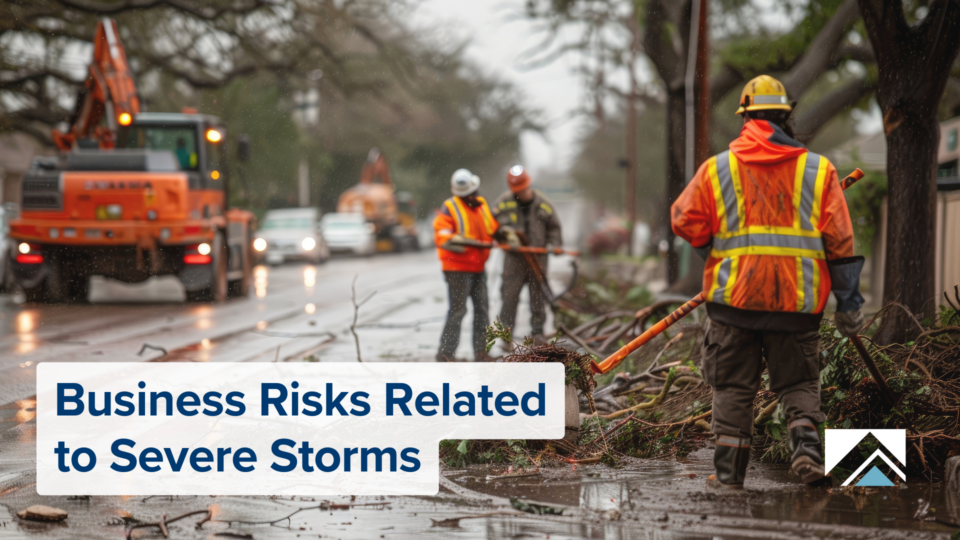Small Businesses and Executive Risks
Emerging and expanding threats are exposing small businesses to heighted executive liability, according to research from Coalition, putting business leaders increasingly in the crosshairs of legal action.
This article discusses the changing executive risk landscape that’s being driven by digital transformation, pandemic-related legal issues, financial activities and employment practices liability (EPL) risks.

The Cost of Risk
Decisions, errors and willful actions can leave executives vulnerable to legal action. A variety of parties—including customers, partners or co-owners, shareholders, employees, competitors, creditors and government agencies—can bring forth lawsuits against any privately held organization. In fact, 1 in 3 small businesses carrying directors and officers (D&O) coverage have experienced a claim in the last two years, while 1 in 5 faced an EPL claim. Over a quarter (28%) faced some kind of litigation over the last 24 months. The research also revealed that the average D&O case for businesses with up to 250 employees costs over $120,000, making the potential impact catastrophic for small businesses. In addition, the average EPL loss is $68,867.
Digital Risks
As technology advances, so does the evolution of corporate and executive risks. Cyberattacks have become faster, more frequent and more severe in recent years, threatening companies’ data and reputations. These rising trends were worsened by the COVID-19 pandemic, which forced businesses to digitally transform in order to survive.
However, many companies were unprepared for the complex and unfamiliar risks of the digital landscape. The following are ways in which digital unfamiliarity can expose executives to new liabilities:
- Remote work and recruitment—As businesses moved their operations remotely due to the pandemic, they had to abruptly support remote work and navigate remote hiring and onboarding.
- Outsourcing of digital functions—When companies hire third-party vendors to handle some or all aspects of their digital strategies, it opens up a company to litigation if there is a failure to understand and comply with applicable outsourcing arrangements and regulations.
- Failed digital transformation—Failure to properly digitize processes can lead to financial consequences and shareholder litigation.
Financial Risks
Financial-activity litigation is typically covered under a D&O policy, and uninsured companies can suffer catastrophic losses. The following financing activities can leave D&Os susceptible to exposure and risk:
- Merger objection litigation—Shareholders are increasingly accusing company officers of conducting mergers that involve conflicts of interest.
- Special-purpose acquisition company (SPAC) class actions—To fast-track an initial public offering, many companies choose to form an SPAC—a shell company with the sole purpose of merging or acquiring. However, inadequately disclosing SPAC information to shareholders may result in lawsuits and SEC investigations.
- Bankruptcy filings—Many retailers, restaurants and other small businesses were forced to file bankruptcy due to the pandemic. Such filings can lead to lawsuits alleging that bankruptcy directly resulted from D&Os’ acts, errors or omissions.
- Other fiduciary issues—Breaches of contract, fraud, conspiracy and unfair treatment of shareholders can all expose company executives to litigation.
EPL Risks
EPL risks can be related to both employment matters and a company’s environmental, social and governance practices. According to Coalition, 26% of companies with 100 or more employees experienced an EPL claim in the last two years. EPL-related litigation can result from issues regarding:
- Diversity, inclusion and equity
- Discrimination or harassment
- Wrongful termination
- Employee benefits mismanagement
- Activism incidents
- Employee fraud
- Whistleblowing
- Health and safety violations
The most common reason businesses don’t purchase executive risk coverage—including D&O, EPL, fiduciary liability and crime—is because they believe their businesses are too small to need it. However, any privately held organization’s officers, board members or employees can be sued over the decisions, errors, willful actions or even statements they make. For more executive risk coverage information, contact us today.
For more information on risk management, contact a UNICO Advisor.
© 2022 Zywave, Inc. All rights reserved. Readers should contact legal counsel or an insurance professional for appropriate advice.








